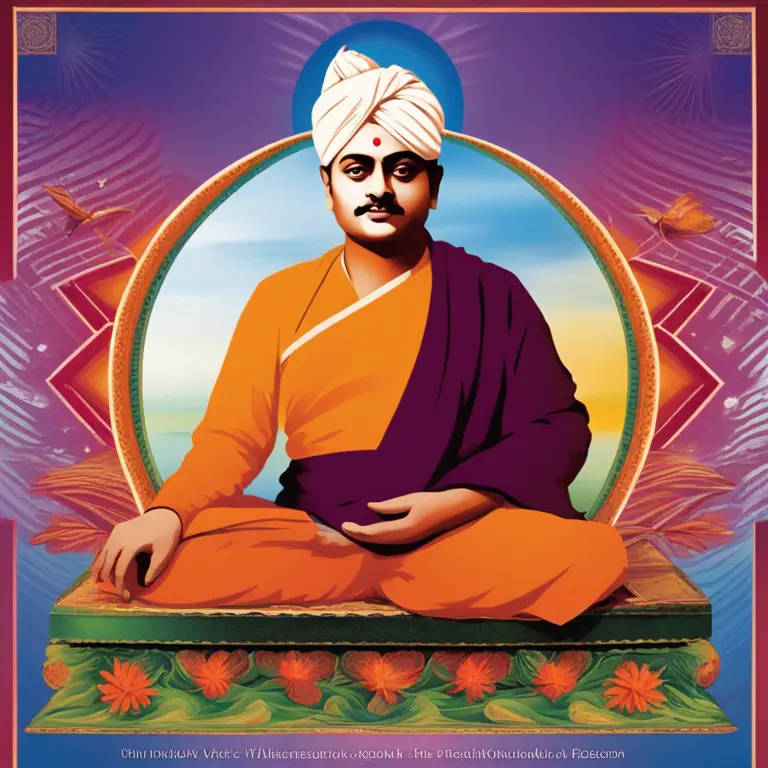
The Pioneers of Meditation In The Western World Explored
Discover the key figures who introduced meditation to Western audiences and their impact on contemporary spiritual practices.
article by Hina Kurosawa
The Roots of Western Meditation
Meditation, the ancient practice of mind and body connection, has its origins in Eastern traditions such as Buddhism, Hinduism, and Taoism. Yet, it wasn't until the 20th century that meditation gained significant traction in the West. The journey of meditation to Western cultures is a tapestry woven by several influential figures, each bringing their own interpretation and technique. This transition marked a pivotal shift towards the acceptance and integration of Eastern spirituality into Western life, which continues to flourish today.

Swami Vivekananda's Groundbreaking Visit
One of the earliest disseminators of meditation to the West was Swami Vivekananda, an Indian Hindu monk who introduced Vedanta and Yoga to Europe and America in the late 19th century. His historic speech at the Parliament of the World's Religions in Chicago in 1893 captivated Western minds, presenting the profound depths of Indian spirituality. Vivekananda's teachings emphasized the universality of truth and the importance of one's internal experience through meditation.

The Maharishi Effect
In the mid-20th century, Maharishi Mahesh Yogi emerged as another pivotal figure in bringing meditation to the West. He founded the Transcendental Meditation movement, which advocated for a simple, secular form of meditation. His technique gained popularity partly due to its simplicity and scientific claims of enhanced mental and physical health. The Beatles' involvement with Maharishi in the 1960s catapulted Transcendental Meditation into global consciousness.

Zen in the Beat Generation
Zen Buddhism, a Japanese school emphasizing meditation, was popularized in post-World War II America. Key figures like D.T. Suzuki wrote extensively on Zen and influenced the Beat Generation of writers and poets. This counterculture was attracted to Zen's anti-establishment and intuitive approach to spirituality, leading to a broader interest in meditation practices among the Western populace.

The Dalai Lama's Global Influence
The popularity of meditation in the West was also significantly boosted by the 14th Dalai Lama, the Tibetan spiritual leader in exile. His teachings and books on Tibetan Buddhism and meditation, along with his Nobel Peace Prize award in 1989, greatly increased Western interest in Buddhist meditation techniques and the philosophy behind them.
Mindfulness and Modern Science
In recent times, the intersection of meditation and science has brought mindfulness to the forefront of Western consciousness. Jon Kabat-Zinn, the founder of the Mindfulness-Based Stress Reduction (MBSR) program, played a crucial role in the scientific study and clinical application of mindfulness meditation. His work since the late 1970s has led to widespread adoption in various sectors including healthcare, education, and corporate wellness.
The Digital Age of Meditation
With the advent of the digital age, access to meditation has been revolutionized. Mobile apps, online courses, and virtual retreats have made the practice more accessible than ever. This ease of access has democratized meditation, allowing people from all walks of life to engage with the practice on their own terms, transforming meditation from an esoteric endeavor into a mainstream wellness tool.
Published: 1/14/2024
Modified: 1/15/2024
More predictions
Come back here soon to learn more about yourself and your future


Calming the Storm: Mindfulness Meditation for Anger
Discover how mindfulness meditation can be a powerful tool for anger management, promoting inner peace and emotional balance.


Mindfulness & Meditation: A Guide for High Schoolers
Discover the benefits of mindfulness meditation tailored for the hectic life of high school students, and learn simple strategies to incorporate it into the daily routine.


Easing Loneliness with Mindfulness Meditation
Explore how mindfulness meditation can provide solace and connection to alleviate the feelings of loneliness.